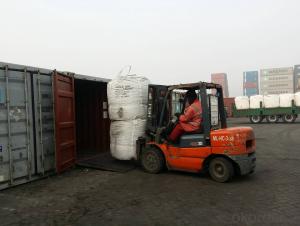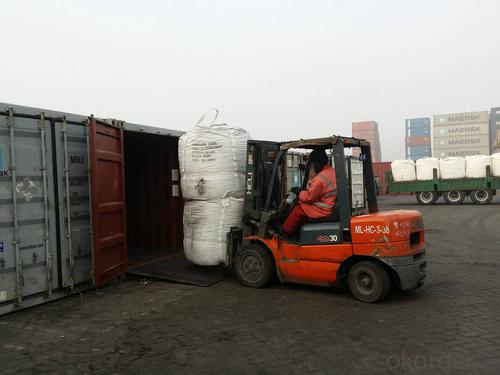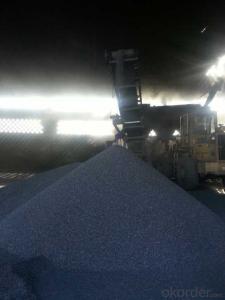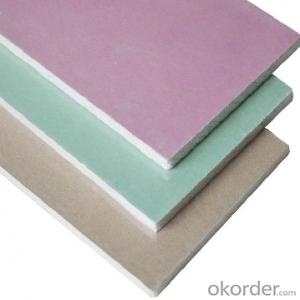FC90% Calcined Anthracite Coal in high quality
- Loading Port:
- Tianjin
- Payment Terms:
- TT OR LC
- Min Order Qty:
- 20.2
- Supply Capability:
- 9550 m.t./month
OKorder Service Pledge
OKorder Financial Service
You Might Also Like
Introduction
Calcined Petroleum Coke comes from delayed coke which extracted from oil refinery. Although Calcined Petroleum Coke contains a little bit higher level of sulfur and nitrogen than pitch coke, the price advantage still makes it widely used during steel-making and founding as a kind of carbon additive/carburant.
Features
Carbon Additive also called Calcined anthracite Coal, Gas Calcined Anthracite Coal, Carbon Raiser, Recarburizer, injection coke, charging coke and etc.
It is playing more and more important role in the industry.The main raw material of our Carbon Additive is Ningxia unique high quality Taixi anthracite, with characteristic of low ash and low sulfur. Carbon additive has two main usage, fuel and additive. When being used as the carbon additive of steel-smelting, and casting, the fixed carbon may achieve above 95%. Carbon additive is becoming more and more crucia in the steel and foundry industry.
Best quality Taixi anthracite as raw materials through high temperature calcined at 1200-1250 ℃ for 24 hours by the DC electric calciner with results in eliminating the moisture and volatile matter from Anthracite efficiently, improving the density and the electric conductivity and strengthening the mechanical strength and anti-oxidation, It has good characteristics with low ash, low resistivity, low carbon and high density. It is the best material for high quality carbon products, it is used as carbon additive in steel industry or fuel.
Specifications
PARAMETER UNIT GUARANTEE VALUE | |||||
F.C.% | 95MIN | 94MIN | 93MIN | 92MIN | 90MIN |
ASH % | 4MAX | 5MAX | 6MAX | 7MAX | 8MAX |
V.M.% | 1 MAX | 1MAX | 1.5MAX | 1.5MAX | 1.5MAX |
SULFUR % | 0.5MAX | 0.5MAX | 0.5MAX | 0.5MAX | 0.5MAX |
MOISTURE % | 0.5MAX | 0.5MAX | 0.5MAX | 0.5MAX | 0.5MAX |
Pictures
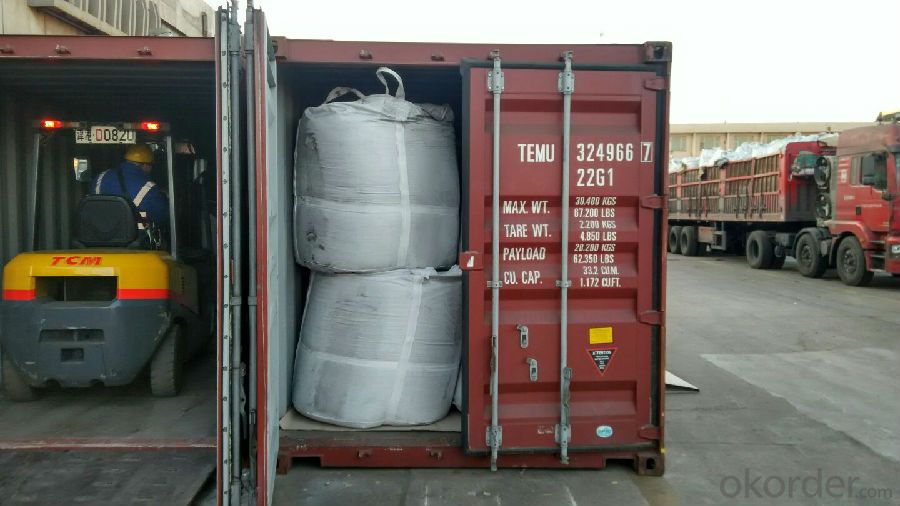
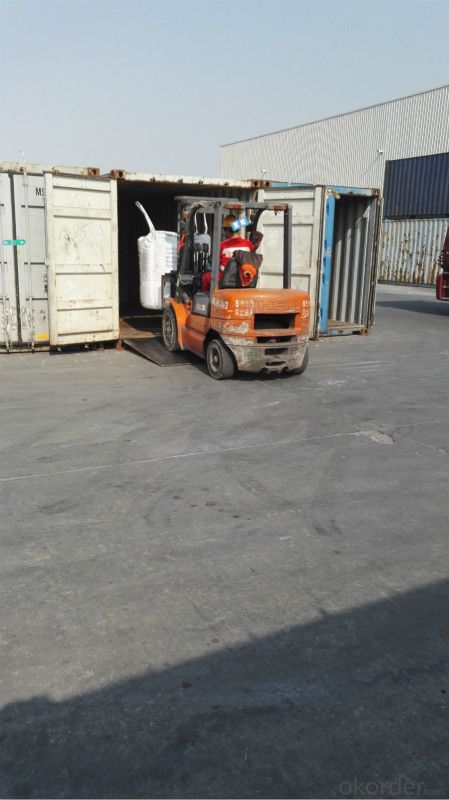

FAQ:
1. What is the packing?
In 25kg bag/ In jumbo bags without pallet/ Two jumbo bags with one pallet/ or as customers’ request
2. What is the production capacity?
10 thousand tons per month
3 What is payment term?
L/C, T/T
4 What is the service?
We will send sample to the third party(CIQ, CCIC, SGS,BV or to be discussed) for checking, and present the test certificate and loading repot of shipment.
- Q:How does carbon impact the prevalence of heatwaves?
- Carbon impacts the prevalence of heatwaves by contributing to the greenhouse effect. When carbon dioxide and other greenhouse gases are released into the atmosphere, they trap heat from the sun, leading to a rise in global temperatures. This increase in temperature makes heatwaves more frequent, intense, and longer-lasting, posing significant risks to human health, ecosystems, and infrastructure.
- Q:How do humans contribute to carbon emissions?
- Humans contribute to carbon emissions in several ways. One major source of carbon emissions is the burning of fossil fuels for electricity, transportation, and heating. This includes burning coal, oil, and natural gas, which releases carbon dioxide (CO2) into the atmosphere. The use of these fossil fuels is prevalent in our daily lives, from powering our homes and vehicles to manufacturing goods and producing food. Additionally, deforestation, primarily driven by human activities such as agriculture, logging, and urbanization, also contributes to carbon emissions. Trees absorb CO2 and release oxygen, so when they are cut down, the stored carbon is released back into the atmosphere. Moreover, industrial processes, such as cement production and the manufacturing of chemicals, also release substantial amounts of CO2. Lastly, the livestock industry, particularly the production of beef and dairy products, contributes to carbon emissions through methane emissions from livestock and the deforestation associated with expanding grazing areas and growing animal feed. Overall, human activities directly and indirectly contribute to carbon emissions, highlighting the need for collective efforts to mitigate and reduce our impact on the environment.
- Q:How does carbon affect the fertility of soil?
- Carbon is essential for maintaining and enhancing soil fertility. It provides a food source for soil microorganisms, promotes nutrient availability, and improves soil structure, water holding capacity, and overall soil health. Additionally, carbon helps increase the capacity of soil to retain and release nutrients, creating a favorable environment for plant growth and enhancing soil fertility.
- Q:How does carbon impact the stability of tundra ecosystems?
- Carbon impacts the stability of tundra ecosystems in several ways. Firstly, carbon plays a crucial role in the formation and development of tundra soils. As plants in the tundra grow and photosynthesize, they absorb carbon dioxide from the atmosphere and convert it into organic matter through photosynthesis. This organic matter eventually decomposes and adds carbon to the soil, forming a layer of organic-rich permafrost that helps stabilize the ecosystem. Additionally, carbon in the form of vegetation acts as a protective layer against erosion in tundra ecosystems. The dense vegetation cover, composed of mosses, lichens, and shrubs, helps to hold the soil in place and prevents it from being washed away by wind or water. This stabilization is essential in the tundra, where the cold temperatures and short growing seasons limit plant growth and soil development. Furthermore, the stability of tundra ecosystems is influenced by the release of carbon dioxide and methane, which are greenhouse gases, from the melting permafrost. As global temperatures rise, the permafrost thaws, releasing stored carbon into the atmosphere. This process creates a positive feedback loop, as the released carbon contributes to further warming, which in turn accelerates permafrost thawing. This feedback loop has the potential to destabilize tundra ecosystems by altering the balance of plant and animal life, disrupting nutrient cycling, and increasing the risk of wildfires. Overall, carbon plays a vital role in maintaining the stability of tundra ecosystems through the formation of soils, erosion control, and the regulation of greenhouse gas emissions. Understanding and managing carbon dynamics in the tundra is crucial for preserving these unique and fragile ecosystems in the face of climate change.
- Q:How does carbon dioxide contribute to global warming?
- Carbon dioxide contributes to global warming primarily through the greenhouse effect. When released into the atmosphere from various human activities such as burning fossil fuels and deforestation, carbon dioxide acts as a greenhouse gas. It traps heat within the Earth's atmosphere, preventing it from escaping back into space. This results in the overall increase in temperature on the planet, leading to global warming and its associated consequences such as rising sea levels, extreme weather events, and the disruption of ecosystems.
- Q:How does carbon affect the ozone layer?
- Carbon does not directly affect the ozone layer. However, certain carbon compounds, such as chlorofluorocarbons (CFCs), can release chlorine atoms when they reach the stratosphere. These chlorine atoms can then react with ozone molecules, leading to the depletion of the ozone layer.
- Q:What is the chemical symbol for carbon?
- The chemical symbol for carbon is C.
- Q:What is the carbon footprint of different activities?
- The carbon footprint of different activities refers to the amount of greenhouse gas emissions, particularly carbon dioxide (CO2), that are released into the atmosphere as a result of carrying out those activities. It is a measure of the impact that these activities have on climate change. Various activities contribute to our carbon footprint, including transportation, energy use, food production, and waste management. The carbon footprint of each activity can vary significantly depending on factors such as the type of energy sources used, the efficiency of technologies involved, and individual choices. Transportation is a major contributor to carbon emissions, with cars, planes, and ships being the primary sources. The use of fossil fuels in these modes of transportation releases CO2 into the atmosphere. The type of vehicle, fuel efficiency, and distance traveled all play a role in determining the carbon footprint of transportation. Energy use is another significant contributor, particularly in the form of electricity generation. Burning fossil fuels like coal and natural gas to produce electricity releases CO2. However, renewable energy sources like wind, solar, and hydroelectric power have a lower carbon footprint as they do not emit greenhouse gases during operation. Food production is often overlooked but has a substantial carbon footprint. The agricultural practices involved in growing, processing, packaging, and transporting food contribute to emissions. Additionally, livestock farming, particularly beef and lamb, produces significant amounts of methane, a potent greenhouse gas. Waste management also contributes to carbon emissions, primarily through the decomposition of organic waste in landfills. As organic waste breaks down, it produces methane. Proper waste management techniques, such as composting and anaerobic digestion, can help reduce these emissions. It is important to note that the carbon footprint of activities can be reduced through various measures. Adopting energy-efficient technologies, using public transportation or carpooling, choosing renewable energy sources, eating a more sustainable diet, and practicing proper waste management are all ways to minimize our carbon footprint. Understanding the carbon footprint of different activities allows individuals, businesses, and governments to make informed decisions and take necessary actions to mitigate climate change. By reducing our carbon footprint, we can contribute to a more sustainable and environmentally-friendly future.
- Q:How does carbon affect the quality of indoor air?
- Carbon can have a significant impact on the quality of indoor air as it is emitted from various sources such as burning fossil fuels, cooking, and smoking. High levels of carbon can lead to poor air quality, causing symptoms like headaches, dizziness, and fatigue. Additionally, carbon monoxide, a toxic gas produced by incomplete combustion, can be lethal in enclosed spaces. Therefore, it is crucial to properly ventilate and monitor indoor areas to mitigate the negative effects of carbon on indoor air quality.
- Q:How does carbon contribute to the structure of DNA?
- Carbon is an essential element in the structure of DNA as it forms the backbone of the molecule. Carbon atoms in the sugar-phosphate backbone of DNA provide stability and flexibility, allowing the molecule to twist and fold into its double helix shape. Additionally, carbon atoms are also present in the nitrogenous bases, which are the building blocks of the genetic code. Overall, carbon's presence in DNA is crucial for its overall structure and function in storing and transmitting genetic information.
1. Manufacturer Overview |
|
|---|---|
| Location | |
| Year Established | |
| Annual Output Value | |
| Main Markets | |
| Company Certifications | |
2. Manufacturer Certificates |
|
|---|---|
| a) Certification Name | |
| Range | |
| Reference | |
| Validity Period | |
3. Manufacturer Capability |
|
|---|---|
| a)Trade Capacity | |
| Nearest Port | |
| Export Percentage | |
| No.of Employees in Trade Department | |
| Language Spoken: | |
| b)Factory Information | |
| Factory Size: | |
| No. of Production Lines | |
| Contract Manufacturing | |
| Product Price Range | |
Send your message to us
FC90% Calcined Anthracite Coal in high quality
- Loading Port:
- Tianjin
- Payment Terms:
- TT OR LC
- Min Order Qty:
- 20.2
- Supply Capability:
- 9550 m.t./month
OKorder Service Pledge
OKorder Financial Service
Similar products
New products
Hot products
Hot Searches
Related keywords
